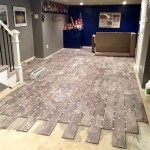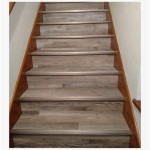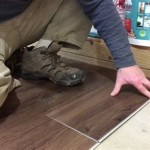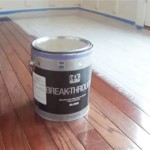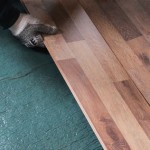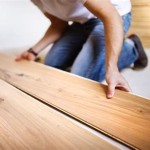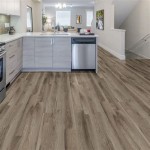How to Remove Cyanoacrylate Adhesive from Laminate Flooring
Laminate flooring, prized for its durability and aesthetic appeal, can unfortunately fall victim to common household mishaps, including accidental spills of cyanoacrylate adhesive, commonly known as super glue. This powerful adhesive bonds rapidly and tenaciously to various surfaces, posing a challenge when it comes to removal, especially from delicate materials like laminate flooring. Attempting to simply scrape or force the glue off is likely to damage the flooring's protective layer, resulting in unsightly scratches or even permanent discoloration. Therefore, a careful and methodical approach is crucial to successfully removing the adhesive without compromising the integrity of the laminate surface.
The success of cyanoacrylate adhesive removal hinges on understanding its chemical properties and employing appropriate solvents or techniques to weaken its bond. Several methods exist, each with its own advantages and disadvantages depending on the size and age of the spill, as well as the type of laminate flooring involved. It is always prudent to test any cleaning solution or technique on an inconspicuous area of the floor first to ensure it does not cause any adverse reactions, such as discoloration, staining, or weakening of the laminate's finish. This precautionary measure can save considerable time and expense in the long run by preventing further damage.
Prior to initiating any removal process, ensure the work area is well-ventilated. Some solvents emit fumes that can be irritating or harmful if inhaled. Wearing gloves is also recommended to protect the skin from exposure to the adhesive and cleaning solutions. Gather all necessary materials beforehand to expedite the process and minimize the risk of spreading the adhesive. These materials might include soft cloths, cotton balls, blunt plastic scrapers, various solvents, and protective eyewear.
Softening the Adhesive with Warm Water
One of the initial and gentlest approaches is to attempt to soften the adhesive with warm water. This method is most effective on fresh spills before the adhesive has fully cured. Dampen a soft cloth with warm water – it is important that the cloth is not excessively wet, as prolonged exposure to moisture can potentially damage the laminate flooring. Place the damp cloth over the adhesive residue and allow it to sit for several minutes. The warm water will help to soften the adhesive, making it easier to gently lift or scrape away.
After allowing sufficient time for the water to penetrate the adhesive, use a blunt plastic scraper, such as a credit card or putty knife, to carefully scrape at the edges of the adhesive. Avoid applying excessive pressure, as this could scratch the laminate surface. Work slowly and patiently, gently lifting the adhesive bit by bit. If the adhesive remains stubborn, reapply the warm water compress and repeat the scraping process. The goal is to gradually loosen the adhesive's bond with the laminate without causing any physical damage.
If the warm water method alone is insufficient, consider adding a mild dish soap to the water. The soap can act as a surfactant, further helping to break down the adhesive's bond. Prepare a solution of warm water and a few drops of mild dish soap. Dampen a cloth with this solution and apply it to the adhesive residue as described above. After allowing sufficient time for the solution to penetrate, gently scrape away the softened adhesive.
Once the bulk of the adhesive has been removed, clean the area with a clean, damp cloth to remove any remaining residue. Dry the area thoroughly with another clean cloth. Inspect the area carefully to ensure that all traces of the adhesive have been removed and that there is no visible damage to the laminate flooring.
Utilizing Acetone or Nail Polish Remover
Acetone and nail polish remover are effective solvents for dissolving cyanoacrylate adhesive. However, exercise extreme caution when using these substances on laminate flooring, as they can potentially damage the finish or cause discoloration. It is imperative to test the acetone or nail polish remover on an inconspicuous area of the floor before applying it to the adhesive residue.
Apply a small amount of acetone or nail polish remover to a cotton ball or soft cloth. Gently dab the adhesive residue with the cotton ball or cloth, avoiding excessive saturation of the surrounding area. Allow the solvent to sit on the adhesive for a few minutes to soften it. The time required will vary depending on the thickness and age of the adhesive.
After allowing sufficient time for the solvent to work, use a blunt plastic scraper to carefully lift away the softened adhesive. As with the warm water method, work slowly and patiently, avoiding excessive pressure. If the adhesive remains stubborn, reapply the solvent and repeat the scraping process. It is important to minimize the amount of time the solvent is in contact with the laminate surface to prevent potential damage.
Once the adhesive has been removed, thoroughly clean the area with a clean, damp cloth to remove any remaining solvent residue. Dry the area immediately with another clean cloth. Inspect the area carefully for any signs of damage or discoloration. If any damage is observed, consult with a professional flooring contractor for advice on repair options.
Due to the potential risks associated with using acetone or nail polish remover, consider starting with the warm water method first and only resorting to these solvents if the gentler approach proves ineffective. Always prioritize the safety of the laminate flooring and minimize the risk of damage.
Applying Mineral Spirits or Lighter Fluid
Mineral spirits and lighter fluid can also be effective for removing cyanoacrylate adhesive from laminate flooring. Like acetone, these solvents should be used with caution and tested on an inconspicuous area before being applied to the adhesive residue. These solvents are flammable; ensuring adequate ventilation and avoiding open flames are crucial safety considerations.
Apply a small amount of mineral spirits or lighter fluid to a soft cloth. Gently dab the adhesive residue with the cloth, ensuring that the surrounding area is not excessively saturated. Allow the solvent to sit on the adhesive for a few minutes to soften it. Monitor the area closely for any signs of adverse reactions, such as discoloration or softening of the laminate finish.
After allowing sufficient time for the solvent to work, use a blunt plastic scraper to carefully lift away the softened adhesive. As with the other methods, work slowly and patiently, avoiding excessive pressure. If the adhesive remains stubborn, reapply the solvent and repeat the scraping process. Minimize the contact time between the solvent and the laminate surface to prevent potential damage.
Once the adhesive has been removed, thoroughly clean the area with a clean, damp cloth to remove any remaining solvent residue. Follow this with a dry cloth to completely dry the area. It is important to remove all traces of the solvent to prevent any lingering odors or potential damage to the flooring.
When working with mineral spirits or lighter fluid, it is imperative to dispose of the used cloths properly. These solvents are flammable and can pose a fire hazard if not handled correctly. Place the used cloths in a sealed metal container and dispose of them according to local regulations.
In all adhesive removal situations, patience and a gentle approach are critical to success. Rushing the process or using excessive force is likely to result in damage to the laminate flooring. If none of the aforementioned methods prove effective, or if you are uncomfortable attempting the removal process yourself, consider consulting with a professional flooring contractor. They possess the expertise and specialized tools necessary to safely and effectively remove the adhesive without damaging the laminate surface.
Preventing future adhesive spills is the best approach. Exercise caution when working with cyanoacrylate adhesives. Work on a protected surface. Should a spill occur, addressing it immediately will make removal easier and minimize the risk of permanent damage. Wiping spills off immediately can prevent the adhesive from setting. Regular floor maintenance and care will also help to preserve the appearance and integrity of the laminate flooring.

How To Remove Super Glue From Laminate Flooring 14 Steps

How To Remove Super Glue From Laminate Flooring 14 Steps

How To Remove Super Glue From Laminate Flooring 14 Steps

How To Remove Super Glue From Laminate Flooring 14 Steps

How To Remove Super Glue From Laminate Flooring 14 Steps

How To Remove Glue From Laminate Flooring

How To Remove Super Glue From Laminate Flooring 14 Steps

Don T Panic If You Spill Super Glue On Wood Floors Here S A Simple Solution

Floor Glue Clean Howto Luxuryvinylplank Pvc Tiktok

How To Remove Vinyl Glue From The Floor Effective Cleanup Guide Waste Removal Usa
See Also
